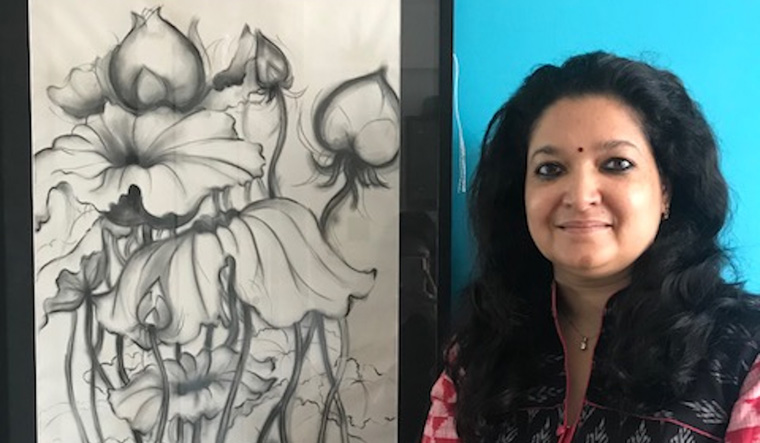Visual artist Radhika Surana can see rhythm in everything she creates. Why won't it be that way? After all, she is a trained classical singer. Surana's introduction to classical music happened at the age of 10, fuelled by her parents' sheer interest. Later, she acquired training as a classical singer. However, despite the initial musical years, she graduated in fine art with painting as a core subject. It was her inclination and interest in art, she says, that made her take it up as a core subject, first in school and later in graduation.
Though art became her profession, the Jaipur-born artist did not stop learning classical music, and learnt to balance both acts with perfection. Today, she fuses both the art forms, creating paintings with rhythmic cadence.
“To me, the flow of line on a paper resembles the notes of music. When I see a subject in front of me, I view it as a rhythm. The use of texture and tones in art become similar to the modulation of the voice of singers. The translation of this rhythm into lines creates an expression personal to me. Both lines and music are extensions of my search for rhythm. I feel that my works have emotions,” she explains.
Her upcoming showcase, 'Search for Rhythm' is also one of a kind, where she will find parallels between music and painting. In the upcoming works of the Delhi-based artist, she is showcasing taals using charcoal and pencils as medium. This also marks her debut experiment with charcoal and pencil. In her works, the artist has added monochrome tones while creating a lyrical synergy between music and art.
“Music has been a part of my life because of my training. It is mainly because of my musical connection that I can see notes in everything. One feels joy in listening to music because of the beauty that he/she feels while listening to a note. Similarly, the beauty of the lines can be seen in the strength and depth with which they are drawn in one stroke. I am of a belief that music and art are similar to each other,” she says.
This is the eighth solo show that Surana will showcase at Triveni Gallery, Triveni Kala Sangam. With 44 pieces on display, there are six imperial sized charcoal drawings of lotuses and around 10 clusters of three to four sketches each. The titles of the charcoal sketches are based on the basic concepts of rhythm in Hindustani classical music; for instance there is sam, the beginning of the rhythmic cycle; laya, the rhythm; avartan, the cycle of 16 beats; matra, the beat; khaali, muted beat; bol, the words of the rhythm among others. The lotuses depicted in these works are inspired by Surana’s visit to Thailand.
Her earlier works have been themed mostly around nature, divine deities and music. Most of them were done in transparent water colour and acrylics. “I prefer these mediums because of their expressiveness. But then, I felt the need to display the power of the simple line on paper. The deeper I go into music and painting, the more I want to simplify my work,” she says.


